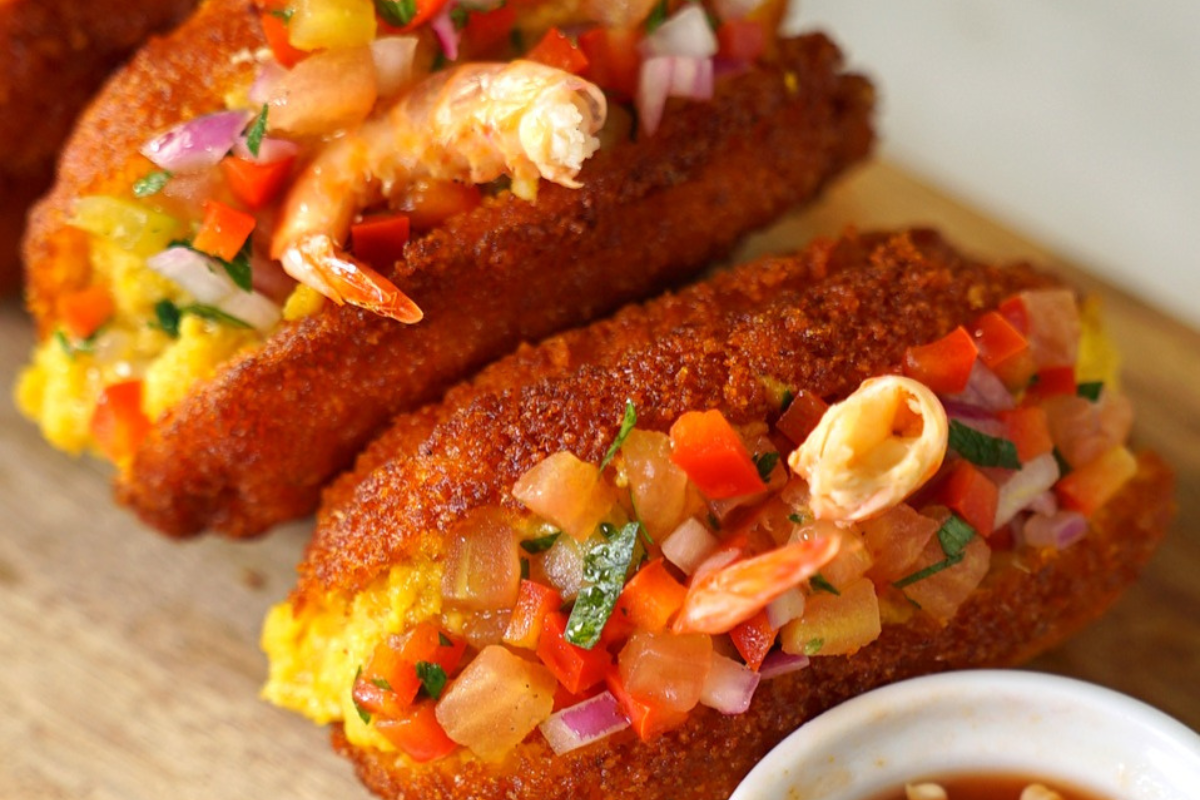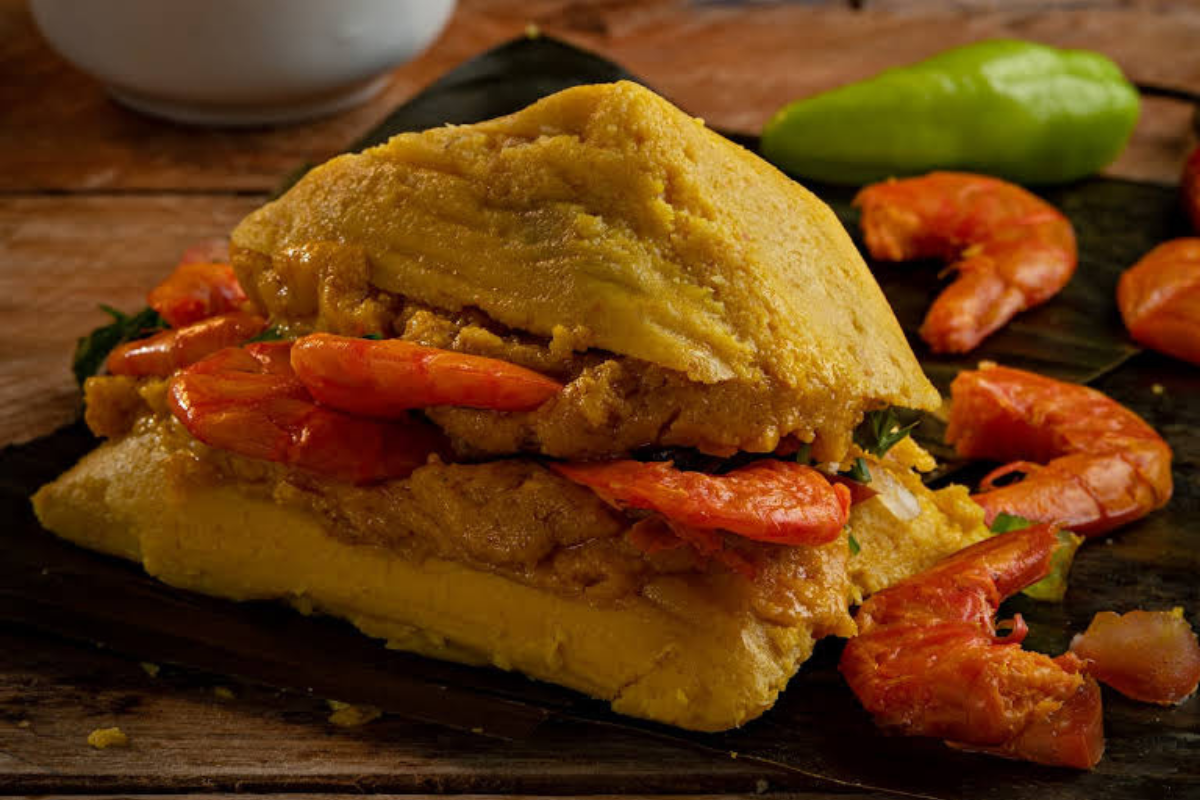Acarajé is more than just a deep-fried bean fritter. It’s a culinary ambassador, a cultural symbol, and a flavor explosion that embodies the vibrant spirit of Brazil. This golden-brown sphere, made with black-eyed peas and fried in palm oil, transcends mere sustenance, offering a window into the country’s rich history, religious traditions, and irresistible street food scene.

Photo: Tastemade
The story of acarajé weaves a tapestry through centuries. Its roots lie in West Africa, brought to Brazil by enslaved people in the 16th century. They transformed their familiar akara, a fritter made with cowpeas, into acarajé, using the readily available black-eyed peas. More than just food, it became a symbol of cultural resilience and resistance, often sold by enslaved women as a way to maintain their traditions.
Acarajé is deeply entwined with Candomblé, a syncretic Afro-Brazilian religion. These fritters are offered to deities like Xangô and Iansã, and their preparation involves specific rituals and blessings. Yet, acarajé transcended its religious significance to become a beloved street food, particularly in Bahia, where it’s often sold by baianas, women adorned in traditional white dresses and colorful turbans.
Biting into an acarajé is a sensory adventure. The crispy, golden exterior gives way to a soft, fluffy interior, bursting with the earthy richness of black-eyed peas. The savory batter is often enhanced with shrimp, onions, and spices like ginger and chili pepper. This symphony of flavors is usually paired with vatapá, a creamy sauce made with coconut milk, cashews, and palm oil, adding a touch of sweetness and richness.
Acarajé is more than just a delicious snack. It is a symbol of cultural heritage, female empowerment, and the enduring spirit of Brazil. It is truly a testament to the power of food to connect us to history, tradition, and each other. So, next time you have the opportunity, don’t hesitate to grab an acarajé.
Beyond the acarajé: Diversifying the delicacy

Photo: Tudo Apetitoso
The world of acarajé transcends the golden sphere we know and love. While the classic version, filled with its symphony of flavors, reigns supreme, a fascinating kaleidoscope of variations dances around it, each offering a unique twist on the beloved Brazilian bite. Let’s embark on a delicious journey to explore two intriguing cousins of the acarajé:
Abará: The mashed marvel
Instead of the coarse, whole black-eyed peas in acarajé, abará takes a smoother route. Here, the beans are meticulously mashed, creating a luxuriously creamy batter that promises an entirely different textural experience. The softness of the abará melts in your mouth, contrasting beautifully with the crispy exterior. This delicate touch also makes abará more filling, making it a perfect option for those seeking a heavier bite.
While the classic fillings still grace the abará’s embrace, like vatapá and caruru, the creamy texture lends itself beautifully to other possibilities. A popular variation in Bahia sees abará filled with a savory mixture of shredded fish, palm oil, and spices, offering a seafood twist on the traditional flavors. For a vegetarian delight, try abará filled with refogado de feijão fradinho (a stewed black bean dish), showcasing the versatility of this mashed marvel.
Borojó: The shrimp sensational
Step aside, traditional vatapá, because borojó is ready to steal the show. This acarajé variation ditches the shrimp paste and spices found in the classic filling, opting instead for a generous heaping of shredded dried shrimp. Imagine the succulent sweetness of the shrimp mingling with the soft bean interior, creating a flavor explosion that dances on the savory-sweet spectrum.
Borojó is a favorite among seafood lovers, offering a concentrated essence of the ocean within its golden shell. However, even for those who prefer their acarajé on the vegetarian side, borojó can be a delightful surprise. Simply substitute the dried shrimp with chopped vegetables like peppers and onions, creating a refreshing and crunchy alternative.

Beyond the variations: A celebration of diversity
Exploring the colorful world of acarajé variations is a fascinating ode to culinary creativity. Each twist and turn on the recipe reflects the ingenuity and resourcefulness of the Bahian people, adapting the dish to local ingredients and preferences. It’s a testament to the vibrant tapestry of Brazilian cuisine, where traditions are embraced while leaving room for delicious experimentation.
So, the next time you find yourself face-to-face with an acarajé vendor, don’t be afraid to ask if they offer abará or borojó. Embrace the spirit of culinary adventure and discover a whole new dimension of this iconic Brazilian treat. Remember, in the world of acarajé, there’s a flavor for every palate, a texture for every desire, and a story waiting to be savored.

